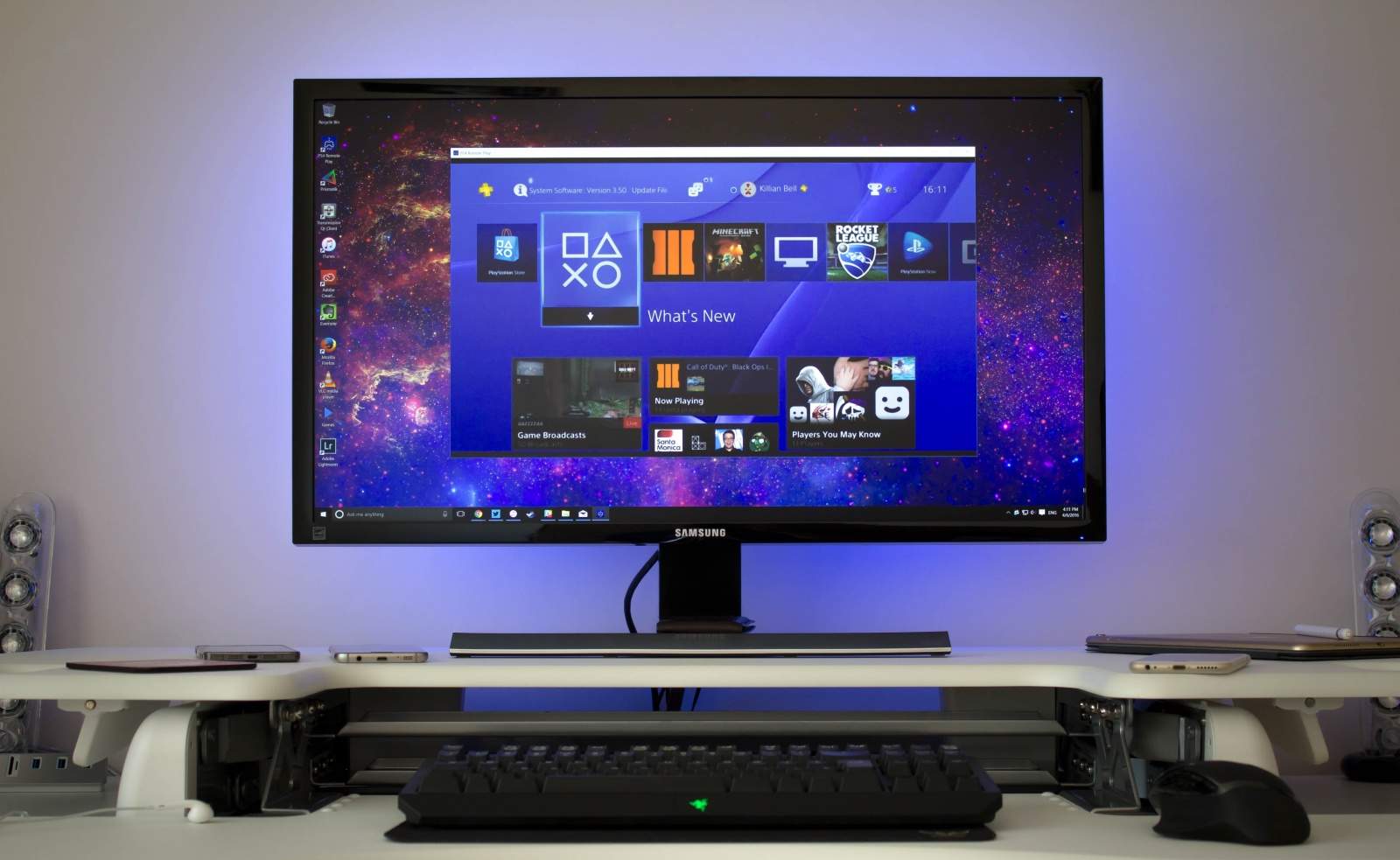Ps Remote Pc
A PS5 console or PS4 console is required for Remote Play. With Remote Play, you can control your PlayStation® console remotely wherever you have a high-speed internet connection. For example, to start an interactive session with the Server01 remote computer, type: Enter-PSSession Server01 The command prompt changes to display the name of the remote computer. Any commands that you type at the prompt run on the remote computer and the results are displayed on the local computer. To end the interactive session, type. Download PS Remote Play for PC Windows 10/8/7 & Laptop. Here we have two tested and working methods to download PS Remote Play on your Windows PC. In this post, we're going to explain to you how to install PS Remote Play on Windows PC by using free and most trusted emulators such as BlueStacks, NoxPlayer, and MEmu.
PowerShell has many different ways to run commands against remote computers. In the last chapter,you saw how to remotely query WMI using the CIM cmdlets. PowerShell also includes several cmdletsthat have a built-in ComputerName parameter.

As shown in the following example, Get-Command can be used with the ParameterName parameter todetermine what commands have a ComputerName parameter.
Commands such as Get-Process and Get-Hotfix have a ComputerName parameter. This isn't thelong-term direction that Microsoft is heading for running commands against remote computers. Even ifyou find a command that has a ComputerName parameter, chances are that you'll need to specifyalternate credentials and it won't have a Credential parameter. And if you decided to runPowerShell from an elevated account, a firewall between you and the remote computer can block therequest.
To use the PowerShell remoting commands that are demonstrated in this chapter, PowerShell remotingmust be enabled on the remote computer. Use the Enable-PSRemoting cmdlet to enable PowerShellremoting.
One-To-One Remoting
If you want your remote session to be interactive, then one-to-one remoting is what you want.This type of remoting is provided via the Enter-PSSession cmdlet.
In the last chapter, I stored my domain admin credentials in a variable named $Cred. If youhaven't already done so, go ahead and store your domain admin credentials in the $Cred variable.
This allows you to enter the credentials once and use them on a per command basis as long as yourcurrent PowerShell session is active.
Create a one-to-one PowerShell remoting session to the domain controller named dc01.
Notice that in the previous example that the PowerShell prompt is preceded by [dc01]. This meansyou're in an interactive PowerShell session to the remote computer named dc01. Any commands youexecute run on dc01, not on your local computer. Also, keep in mind that you only have access to thePowerShell commands that exist on the remote computer and not the ones on your local computer. Inother words, if you've installed additional modules on your computer, they aren't accessible on theremote computer.
When you're connected to a remote computer via a one-to-one interactive PowerShell remoting session,you're effectively sitting at the remote computer. The objects are normal objects just like the onesyou've been working with throughout this entire book.
When you're done working with the remote computer, exit the one-to-one remoting session by using theExit-PSSession cmdlet.
One-To-Many Remoting

Sometimes you may need to perform a task interactively on a remote computer. But remoting is muchmore powerful when performing a task on multiple remote computers at the same time. Use theInvoke-Command cmdlet to run a command against one or more remote computers at the same time.
In the previous example, three servers were queried for the status of the Windows Time service. TheGet-Service cmdlet was placed inside the script block of Invoke-Command. Get-Service actuallyruns on the remote computer and the results are returned to your local computer as deserializedobjects.
Piping the previous command to Get-Member shows that the results are indeed deserialized objects.
Notice that the majority of the methods are missing on deserialized objects. This means they're notlive objects; they're inert. You can't start or stop a service using a deserialized object becauseit's a snapshot of the state of that object the point when the command ran on the remote computer.
That doesn't mean you can't start or stop a service using a method with Invoke-Command though. Itjust means that the method has to be called in the remote session.
I'll stop the Windows Time service on all three of those remote servers using the Stop() methodto prove this point.
As mentioned in a previous chapter, if a cmdlet exists for accomplishing a task, I recommend usingit instead of using a method. In the previous scenario, I recommend using the Stop-Service cmdletinstead of the stop method. I chose to use the Stop() method to prove a point since many peopleare under the misconception that methods can't be called when using PowerShell remoting. They can'tbe called on the object that's returned because it's deserialized, but they can be called in theremote session itself.
PowerShell Sessions
In the last example in the previous section, I ran two commands using the Invoke-Command cmdlet.That means two separate sessions had to be set up and torn down to run those two commands.
Similar to the CIM sessions discussed in Chapter 7, a PowerShell session to a remote computer can beused to run multiple commands against the remote computer without the overhead of a new session foreach individual command.
Create a PowerShell session to each of the three computers we've been working with in this chapter,DC01, SQL02, and WEB01.
Now use the variable named $Session to start the Windows Time service using a method and check thestatus of the service.
Once the session is created using alternate credentials, it's no longer necessary to specify thecredentials each time a command is run.
When you're finished using the sessions, be sure to remove them.
Summary
In this chapter you've learned about PowerShell remoting, how to run commands in an interactivesession with one remote computer, and how to run commands against multiple computers usingone-to-many remoting. You've also learned the benefits of using a PowerShell session when runningmultiple commands against the same remote computer.
Review
Ps Remote Pc Software
- How do you enable PowerShell remoting?
- What is the PowerShell command for starting an interactive session with a remote computer?
- What is a benefit of using a PowerShell remoting session versus just specifying the computer namewith each command?
- Can a PowerShell remoting session be used with a one-to-one remoting session?
- What is the difference in the type of objects that are returned by cmdlets versus those returnedwhen running those same cmdlets against remote computers with
Invoke-Command?
Ps Remote Pc Download
Recommended Reading
